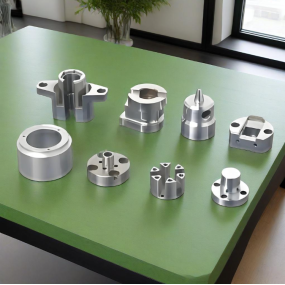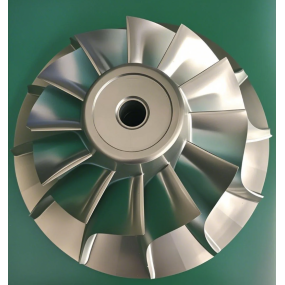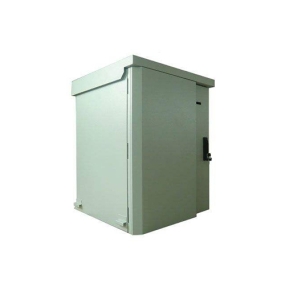The concept of machining accuracy
Processing accuracy is mainly used for the degree of product production, and both processing accuracy and processing error are terms used to evaluate the geometric parameters of the processed surface. The machining accuracy is measured by tolerance grade, and the smaller the grade value, the higher the accuracy; The processing error is expressed numerically, and the larger the value, the greater the error. High machining accuracy means small machining errors, and vice versa.
There are a total of 20 tolerance levels from IT01, IT0, IT1, IT2, IT3 to IT18. Among them, IT01 represents the highest machining accuracy of the part, IT18 represents the lowest machining accuracy of the part, and generally IT7 and IT8 are of medium machining accuracy.
The actual parameters obtained by any processing method will not be absolutely accurate. From the perspective of the function of the part, as long as the processing error is within the tolerance range required by the part drawing, it is considered to ensure the processing accuracy.
The quality of a machine depends on the machining quality of the parts and the assembly quality of the machine. The machining quality of parts includes two major parts: machining accuracy and surface quality.
Mechanical machining accuracy refers to the degree to which the actual geometric parameters (size, shape, and position) of a machined part match the ideal geometric parameters. The difference between them is called machining error. The magnitude of machining error reflects the level of machining accuracy. The larger the error, the lower the machining accuracy, and the smaller the error, the higher the machining accuracy.
Adjustment method
(1) Adjust the process system
(2) Reduce machine tool errors
(3) Reduce transmission errors in the transmission chain
(4) Reduce tool wear
(5) Reduce the stress and deformation of the process system
(6) Reduce thermal deformation in the process system
(7) Reduce residual stress
Reasons for Impact
(1) Processing principle error
Processing principle error refers to the error generated by using approximate blade profiles or approximate transmission relationships for processing. Processing principle errors often occur in the machining of threads, gears, and complex surfaces.
In processing, approximate processing is generally used to improve productivity and economy on the premise that the theoretical error can meet the requirements of processing accuracy.
(2) Adjustment error
The adjustment error of a machine tool refers to the error caused by inaccurate adjustment.
5. Measurement method
The machining accuracy adopts different measurement methods according to different machining accuracy contents and accuracy requirements. Generally speaking, there are several types of methods:
(1) According to whether the measured parameter is directly measured or not, it can be divided into direct measurement and indirect measurement.
Direct measurement: directly measuring the measured parameter to obtain the measured size. For example, measuring with a caliper or comparator.
Indirect measurement: Measuring geometric parameters related to the measured size and obtaining the measured size through calculation.
Obviously, direct measurement is more intuitive, while indirect measurement is more cumbersome. Generally, when the measured size or direct measurement cannot meet the accuracy requirements, indirect measurement has to be used.
(2) According to whether the reading value of the measuring instrument directly represents the value of the measured size, it can be divided into absolute measurement and relative measurement.
Absolute measurement: The reading value directly represents the size of the measured dimension, as measured with a vernier caliper.
Relative measurement: The reading value only represents the deviation of the measured size relative to the standard quantity. If measuring the diameter of a shaft with a comparator, it is necessary to first adjust the zero position of the instrument with a measuring block, and then measure. The measured value is the difference between the diameter of the side shaft and the size of the measuring block, which is called relative measurement. Generally speaking, the relative measurement accuracy is higher, but the measurement is more complicated.
(3) According to whether the measured surface is in contact with the measuring head of the measuring instrument, it can be divided into contact measurement and non-contact measurement.
Contact measurement: A measuring force exists when the measuring head is in contact with the surface being contacted and has a mechanical effect. If measuring parts with a micrometer.
Non contact measurement: The measuring head does not come into contact with the surface of the measured part, and non-contact measurement can avoid the influence of measurement force on the measurement results. Such as using projection method, light wave interference method for measurement, etc.
(4) According to the number of parameters measured at once, it can be divided into single measurement and comprehensive measurement.
Single measurement: measure each parameter of the tested part separately.
Comprehensive measurement: Measuring the comprehensive indicators that reflect the relevant parameters of the parts. When measuring threads with a tool microscope, the actual pitch diameter, profile half angle error, and cumulative pitch error of the thread can be measured separately.
Comprehensive measurement generally has high efficiency and is more reliable in ensuring the interchangeability of parts, and is commonly used for inspecting finished parts. Single measurement can determine the error of each parameter separately, and is generally used for process analysis, process inspection, and measurement of specified parameters.
(5) According to the role of measurement in the machining process, it can be divided into active measurement and passive measurement.
Active measurement: The workpiece is measured during the machining process, and the results are directly used to control the machining process of the part, thereby timely preventing the generation of waste products.
Passive measurement: Measurement taken after the machining of the workpiece. This type of measurement can only determine whether the processed parts are qualified, and is limited to discovering and removing waste products.
(6) According to the state of the tested part during the measurement process, it can be divided into static measurement and dynamic measurement.
Static measurement: measure relative stillness. Measure the diameter with a micrometer.
Dynamic measurement: During measurement, the surface being measured moves relative to the simulated working state of the measuring head.
The dynamic measurement method can reflect the situation of parts approaching the usage state, which is the development direction of measurement technology.


 Spanish
Spanish Arabic
Arabic Portuguese
Portuguese Belarusian
Belarusian Japanese
Japanese Russian
Russian Icelandic
Icelandic Bulgarian
Bulgarian Azerbaijani
Azerbaijani Estonian
Estonian Irish
Irish Polish
Polish Persian
Persian Boolean
Boolean Danish
Danish German
German French
French Filipino
Filipino Finnish
Finnish Korean
Korean Dutch
Dutch Galician
Galician Catalan
Catalan Czech
Czech Croatian
Croatian Latin
Latin Latvian
Latvian Romanian
Romanian Maltese
Maltese Malay
Malay Macedonian
Macedonian Norwegian
Norwegian Swedish
Swedish Serbian
Serbian Slovak
Slovak Slovenian
Slovenian Swahili
Swahili Thai
Thai Turkish
Turkish Welsh
Welsh Urdu
Urdu Ukrainian
Ukrainian Greek
Greek Hungarian
Hungarian Italian
Italian Yiddish
Yiddish Indonesian
Indonesian Vietnamese
Vietnamese Haitian Creole
Haitian Creole Spanish Basque
Spanish Basque











